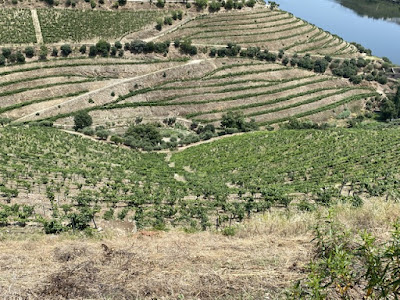People who follow my blog know that I am quite fond of the Standish wines. They push fruit weight and ripeness to the boundary, but in doing so manage to match power with elegance. I like these wines in particular, as in this way they deliver a uniqueness of what Barossa Shiraz can be in the world of wine.
Today, I will report on a comparison between two wines of 2021, the current release, and the same wines from 2018. Before I go into details, a few words on alcohol levels.
Three of the 2021 releases have a noted alcohol content of 14.9%. Apart from the fact that this is high, it is most likely to be higher in reality. As in Australia the actual level can be 1.5%ige points different from the label, it seems Dan Standish wanted to avoid a 15% plus labelling. Do these wines really all have the same alcohol level? I find it difficult to talk to Dan Standish about this. It is legal, but seems deceiving to me.
Why is the alcohol so high in a drought braking, milder vintage? Standish likes to use whole-bunch in his wines. The 2021 Lamella uses 100% whole-bunch , there is 70% in the Schubert Theorem. People use different arguments about the benefit of whole-bunch. To me it adds texture, tannin structure and complexity, but the stems have to be ripe. So in a mild vintage like 2021, harvesting has to be late to achieve stem ripeness. This drives the sugar content, and ultimately alcohol up.
Now let us have a look at the wines.
The labels are not very interesting. I am showing the back label for the 2021s.So I am comparing here the 2021 Lamella with the 2018, and the same years for the Schubert Theorem. In theory, the Lamella would be the freshest of the Standish line-up, and the Schubert Theorem the biggest wine. As these are big wines, I have tasted them over three days, from an open bottle.
The Lamella comes from the Hutton Vale vineyard in the northern part of Eden Valley. The cuttings come from the Mt. Edelstone vineyard. The red-brown earth is similar to much of the Barossa Valley, but the vineyard is at higher altitude. The fruit is the latest picked of the Standish vineyards.
The 2021 Lamella is quite ripe; it is black fruited as opposed to the more typical blue fruit from Eden Valley. The oak is noticeable, but the fruit can take it. There are Early Grey, black olive, and licorice flavours. On day one, the wine needs time to open up in the glass. Then it becomes quite elegant and delivers a long, harmonious line. On day two, the fruit is more aromatic, but the alcohol is also starting to come through. On day three, the wine loses some freshness and energy.
Score: 96/+++
The 2018 Lamella shows more violets and is more fragrant. Yes, there is fruit weight, but the wine is more transparent and layered. Raspberry, and blue fruits dominate the slightly peppered palate. This is very elegant. The wine has good energy. It is still very young. I love the silky finish. On day two, the wine has opened up more, and on day three it remains superbly elegant.
Score: 98/+++
The Schubert Theorem comes from a vineyard on Roennfelt Road in Marananga. The vineyards have quite a bit of quartz here, which tends to make the wines big and ripe, as the quartz reflects the heat at night, and the ripening continues. Whole-bunch is 70%.
The 2021 Schubert Theorem is the big surprise for me in this line-up. The wine is black, deep, and powerful, as expected, but it is also quite elegant and lush with silky tannins. In addition to the black and blue fruits, black olive and pencil shave add to this balanced and majestic wine. It has a very long finish. Clearly, the milder conditions were beneficial to the Schubert Theorem in this year. In many ways, the wine is similar to the 2018 Lamella, but with a firmer finish and more fruit weight. The wine remained silky and smooth on day two and three.
Score: 98/+++
The 2018 Schubert Theorem has a similar flavour profile: blackberry, ripe plum, black olive. The wine feels more blocky in the mouth, and is starting to taste a little tough and ripe. On day two, it is less blocky, but starts to show a slightly hot finish, and is not as rounded as on the first day. The very dry tannins lead to a long finish. As the wine mellows, the alcohol becomes noticeable.
Score: 95/++
Overall, this tasting presents a complex picture. Here are some of my insights:
1) The 2018s are still young. In fact, in a blind tasting, one may not be able to distinguish 21 from 18. This points to a very long life for these wines.
2) The wines must definitely breathe. Day two was the tasting peak. At least a few hours decanting is highly recommended.
3) It is hard to predict which of these extraordinary wines performs best. In this tasting it was the 2018 from Eden Valley (the warmer year in the cooler region), and the 2021 Schubert Theorem (the warm region from a cooler year).
4) The concern: initially, the fruit power dominates the alcohol. But as the wines mellow, alcohol may raise its ugly head.
Confused? Comments welcome.
















